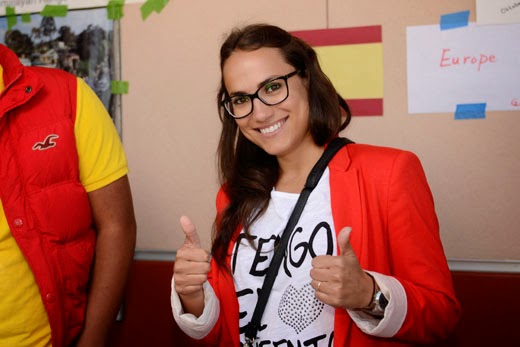 |
| Photo #1 |
Then. It funny how we "see" things changes over the years. So far as photography goes, many of the images taken during the 1960's were influenced by the limitations of the available equipment, or the tastes and preferences of the day.
Peggy was my classmate at the Twin Peaks Elementary School (Class of '63). Recently, her name came up in a conversation with some friends and when I Googled her name, this photo, dated September 30, 1968, appeared (Photo #1). I have no idea what the two are either holding, or pulling apart. Peggy's arm band is a nice touch. A little heavy on the "context", I would say. I'm sure if I were to compare it the other photos from the time, they'd all look about the same.
 |
| Photo #2 |
On May 23, 1973, my first photo (Photo #2) was published. It has a similar bounce-flash look (soft shadows, top lighting) because that's how I made it. Since my I didn't own a Honeywell, I had to calculate/guestimate a workable exposure. A few years later, I read Techniques of Photojournalism: Available
Light and the 35mm Camera by Milton Feinberg, and his approach to photographing
people included portraying them as animated and involved subjects interacting with
each other, or doing something interesting. Looking back, I tried to do this with all my photos, and have come to believe that I was on the right track.
I probably had much more fun photographing a cooking class than an award winning high school senior, since there was lots of action at the former, and almost none at the later. Still, I have to wonder if something couldn't have been done to make the first shot more interesting. I'm obviously not above Monday morning quarterbacking.
Now. I was asked to photography a handgun safety class being sponsored by a local shooting club. When they took a break, I introduced myself to the entire group and explained what I was doing, and that I wanted to make a photograph showing that women, often ignored in the shooting sports, could learn to handle firearms in a safe and relaxed environment. When class resumed, I went outside looking for a suitable background.
Since there would be no live fire that day, I had to approach the photo from a safety, rather than a marksmanship, angle. After finding a suitable location, I had these three students bring their safety equipment (hearing and eye protection) to the firing line. When the arrived, they brought some Blue Guns, non-firing plastic replicas made to look and feel like actual handguns. When they brought them to the firing line they were already demonstrating safe gun handling practices: muzzles up and fingers off the trigger. This photo is starting to come together.
Arranging Subjects. Due to restrictions on space, I had to use a my widest angle lens, which makes the women in the background appear smaller. I had arranged for the smallest woman to stand nearest to me. As for the other two, I purposely placed the second woman slightly behind the first to make her appear a bit slimmer. The third student was tall and slender, so her standing by herself wasn't an issue. Now all I needed was an instructor. I went back into the classroom and grabbed a female instructor and asked her if she would join us outside. Thankfully, she agreed.
 |
| Photo #3 |
To expand on the safety aspect, I had the instructor hold a pair of ear muffs and re-explain the advantage of "muffs" over "plugs" (Photo #3). Although this was covered in the classroom, they didn't seem to mind the review. One thing I noticed: The instructor allowed her left arm to fall to her side. So as she spoke, I gently guided her arm to an elevated position. She continued her talk, not missing a beat.
 |
| Photo #4 |
You can see that my simple redirection of her arm helps to keep the viewer's interest inside the photo. At one point, her left hand opened, she made a joke, and everyone chuckled. I had my shot (Photo #4).
A purist might argue that this is a posed shot, and therefore not "real". I believe it is a managed shot, as they were actually in the process of reviewing material covered in class. I believe the image both tells a story and engages the viewer with some interesting visual elements. It doesn't shout "posed". By combining words (the caption) with the image, we help the viewer understand the situation better than either could have done alone.
And it's much more interesting than the shot of Peggy and Mrs. Wilson.
I am well aware that from a documentary standpoint, my interaction with my subjects invalidated this photo's journalistic integrity. However, I would argue that as a photographer submitting a shot for the Community Section, pages full of smiling "picket fence" photos, one is entitled to a bit more leeway so far how much a photo has been managed. If this was considered hard news I should never do what I did.



































